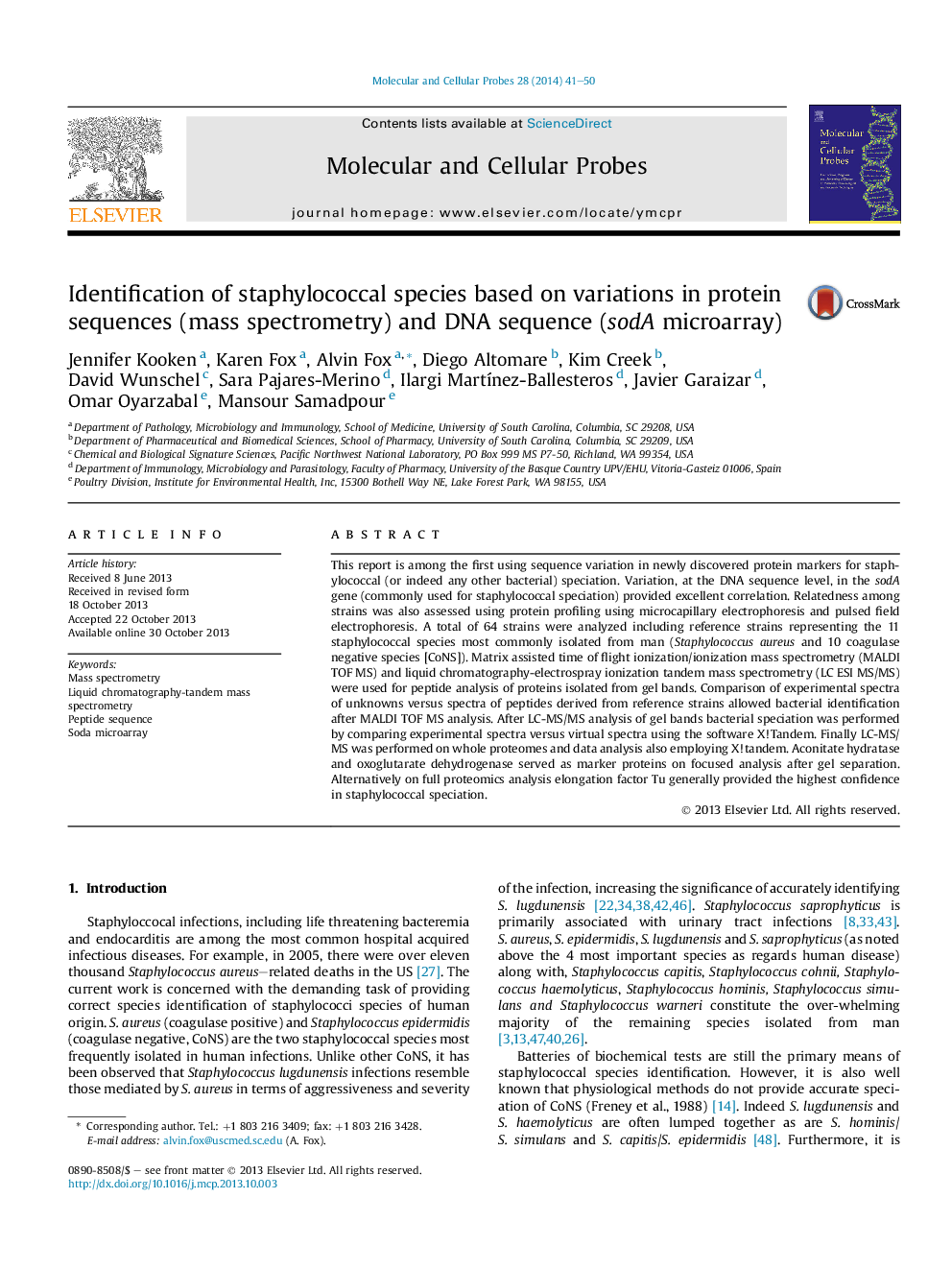| Article ID | Journal | Published Year | Pages | File Type |
|---|---|---|---|---|
| 2199704 | Molecular and Cellular Probes | 2014 | 10 Pages |
•Prototype study correlating proteomic and genetic characterization of staphylococci.•The proteomic approach should have universal application for bacterial speciation.•Utilizes specific peptide sequence unlike MALDI TOF MS protein profiling (mass).
This report is among the first using sequence variation in newly discovered protein markers for staphylococcal (or indeed any other bacterial) speciation. Variation, at the DNA sequence level, in the sodA gene (commonly used for staphylococcal speciation) provided excellent correlation. Relatedness among strains was also assessed using protein profiling using microcapillary electrophoresis and pulsed field electrophoresis. A total of 64 strains were analyzed including reference strains representing the 11 staphylococcal species most commonly isolated from man (Staphylococcus aureus and 10 coagulase negative species [CoNS]). Matrix assisted time of flight ionization/ionization mass spectrometry (MALDI TOF MS) and liquid chromatography-electrospray ionization tandem mass spectrometry (LC ESI MS/MS) were used for peptide analysis of proteins isolated from gel bands. Comparison of experimental spectra of unknowns versus spectra of peptides derived from reference strains allowed bacterial identification after MALDI TOF MS analysis. After LC-MS/MS analysis of gel bands bacterial speciation was performed by comparing experimental spectra versus virtual spectra using the software X!Tandem. Finally LC-MS/MS was performed on whole proteomes and data analysis also employing X!tandem. Aconitate hydratase and oxoglutarate dehydrogenase served as marker proteins on focused analysis after gel separation. Alternatively on full proteomics analysis elongation factor Tu generally provided the highest confidence in staphylococcal speciation.
